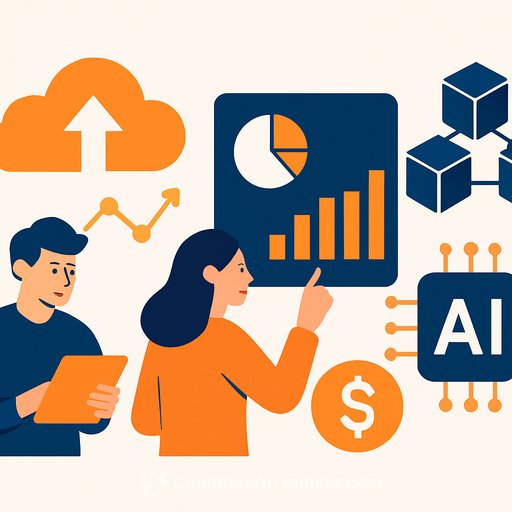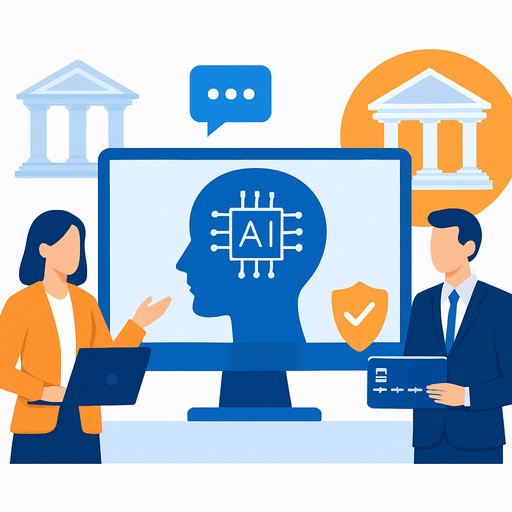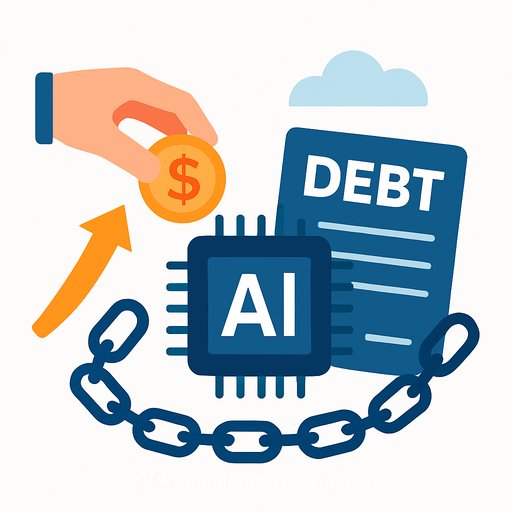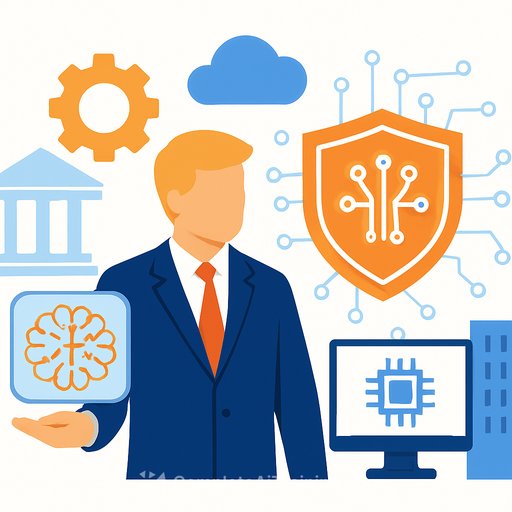Digital Adoption Is Accelerating in Finance
Digital transformation has moved from concept to operating model. AI, blockchain, and cloud are now central to cost efficiency and client delivery. A Reuters press release cites projections of up to 30% lower operational costs in major markets by year-end.
This shift is visible in emerging economies. In Burundi, the London Stock Exchange Group and the Bank of the Republic of Burundi are modernizing systems with end-to-end digital platforms for faster execution and better analytics, as covered by FinTech Global.
AI and Blockchain: From Hype to Utility
AI is reshaping predictive analytics, fraud detection, and real-time decision support. Deloitte's 2025 finance predictions highlight how AI-driven insights help CFOs act faster in volatile conditions.
Blockchain is improving cross-border transactions with greater security and transparency. Posts on X point to tokenized assets and stablecoins moving into production with banks such as Deutsche Bank and Goldman Sachs-shifting the focus to utility over speculation.
Market Outlook and Risks
MarketsandMarkets estimates digital transformation will grow from $911.2 billion in 2024 to $3,289.4 billion by 2030 at a 23.9% CAGR. FinTech Zoom reports that cloud and AI are amplifying digital payments, improving accessibility and throughput.
Risk remains a constant: compliance, model risk, and cyber threats are front and center. Anaptyss notes that firms that fail to adapt could face material disruption.
- Cyber first: Zero-trust architecture, continuous monitoring, and tested incident response.
- Model governance: Bias testing, audit trails, human-in-the-loop, and version control.
- Third-party risk: Clear SLAs, redundancy plans, and exit strategies for critical vendors.
- Data foundation: Clean, permissioned, well-governed data to feed AI and analytics.
- Reg engagement: Early dialogue with supervisors on AI and DLT use cases.
Innovations in Sustainable Finance
Green fintech is driving ESG integration with AI-enabled transparency. Experts highlight how this improves data quality, assurance, and reporting alignment with climate goals.
At events like Trintech Connect 2025, leaders are focusing on AI-driven productivity and finance modernization, as reported by The Globe and Mail. Expect tighter links between automation, disclosure controls, and sustainability metrics.
Friction Points by Region
Developed markets are constrained by legacy cores and fragmented data. In Asia and Africa, mobile adoption is outpacing rules and standards.
Imaginovation flags biometric authentication and embedded finance as major shifts in user experience. Firms are responding with upskilling and partnerships; the Bank of France's emphasis on DLT for tokenized finance points to a larger on-chain share of assets in the years ahead.
Inclusion and Cross-Border Rails
EU initiatives around a digital euro and e-money are gaining momentum. Networks like Stellar and Ripple are cited for real-world cross-border use cases, improving reach and settlement speed.
For an overview of official work on the digital euro, see the European Central Bank's resource hub: ECB: Digital euro. As Forbes notes, the near-term gains are cost and speed, while the bigger prize is better decision quality during turbulence.
What Finance Leaders Should Do Now
- Lock in cost wins: Baseline cost-to-serve; automate reconciliations, KYC/AML workflows, and reporting for 6-12 month payback.
- Prioritize 2-3 AI use cases: Credit risk early warning, fraud scoring, forecast accuracy, or client service copilots.
- Get your data right: Consolidate sources, enforce data lineage, and deploy a secure feature store for models.
- Build an AI policy: Model risk controls, access rights, PII protection, vendor attestations, and kill-switches.
- Pilot tokenized settlement: Start with internal transfers, repo, or cross-entity cash management; measure latency and cost.
- Modernize the core: Target cloud migrations that simplify integration and reduce technical debt.
- Strengthen security: MFA, phishing-resistant credentials, continuous testing, and tabletop exercises.
- Upskill your team: Train finance, risk, and audit on AI workflows and controls. For practical tool stacks, see AI tools for finance.
- Vendor governance: Standardize due diligence, performance SLAs, data retention, and portability.
- Operational KPIs: Track unit cost, straight-through processing, exception rates, cycle time, and model drift.
- Scenario tests: Stress test digital dependencies and failover plans across regions and providers.
- Reg readiness: Map upcoming AI and DLT rules to controls and documentation templates.
The Arc for 2025
Regulators are pushing for consistent standards, and PR Newswire forecasts market growth to $1.86 trillion by 2031 driven by AI and blockchain. Oversight expectations will keep rising.
The focus now is optimization: fewer pilots, more production. Measure value by cost, risk, speed, and inclusion-and keep iterating until the numbers move.
Your membership also unlocks:






